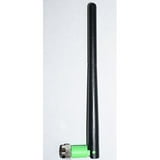Before I got my Hopper 3 system, I had 2 HWS and 3 Joeys when I first upgraded to the Hopper family. I had one of the Joeys connected to my home network by Ethernet only, without a coax connection, and it worked perfectly. Not sure if that is still the case with the Hopper 3 system.
HipKat asked if your RG6 cable that you are trying to swap to that is going to the old Joey location was rated to 3 Ghz, can't tell from your photo and hub is completely out of focus, but I am wondering if there are any connectors between the hub and where that cable you are trying to swap the H3 to terminates, that might not be rated to 3 Ghz? The cable should say somewhere on it what it is rated for and connectors should have a blue center. Just spit-balling here.
HipKat asked if your RG6 cable that you are trying to swap to that is going to the old Joey location was rated to 3 Ghz, can't tell from your photo and hub is completely out of focus, but I am wondering if there are any connectors between the hub and where that cable you are trying to swap the H3 to terminates, that might not be rated to 3 Ghz? The cable should say somewhere on it what it is rated for and connectors should have a blue center. Just spit-balling here.


